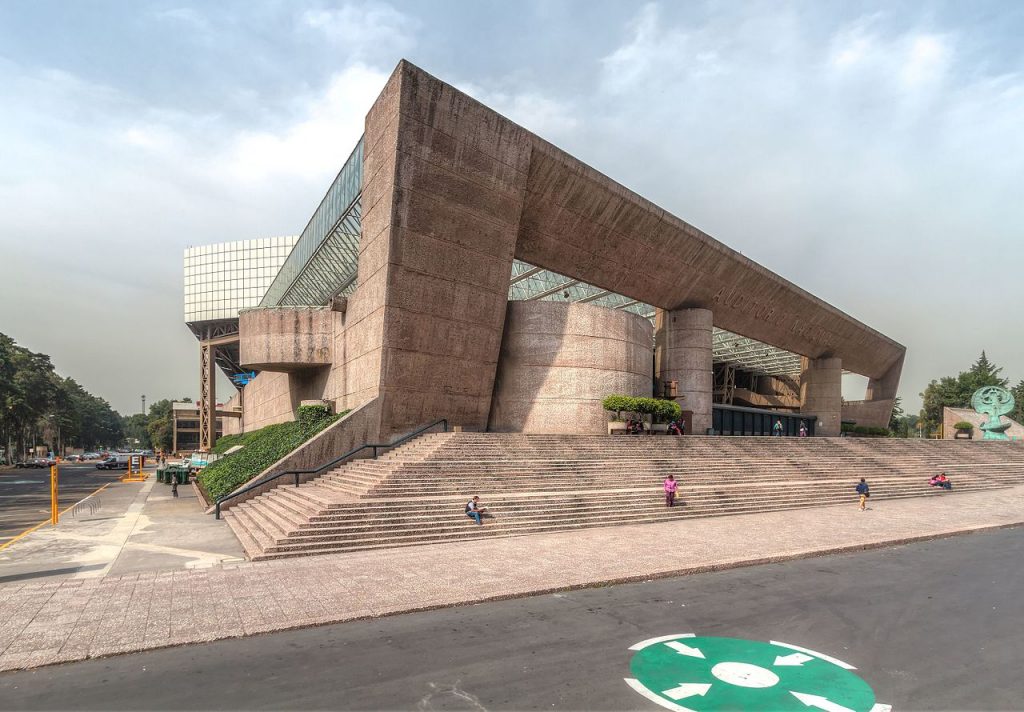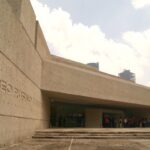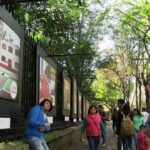
_
Mexico City’s Auditoro Nacional is the leading performance stage in the country. With 9,366 seats, and a stage 23 meters high by 23 meters wide, it’s a very big venue.
History
The National Auditorium began in 1952, primarily as a site for equestrian events. The national equestrian team had played well during the 1948 Olympics in London and so got a brand new stage. The President, Miguel Alemán, donated part of the neighboring Campo Marte to keep the sport going.
The first structure, which included barns, stables and a main theater, was of riveted iron. It opened in 1952, still not completed, for the Lions Club World Convention. Just six months later, the arena was closed and work was suspended.
In 1953, it re-opened as the El Granero Theater, with a circular stage. It began to be referred to as the National Auditorium by 1955. For more than three decades, the National Auditorium was host to artistic and cultural events. It also operated as a venue for trade fairs, political and social events, international beauty pageants, and host to the 1968 Olympic Games.
The Remodeling
By the end of the 1980s, a major remodeling was in order. The architects Teodoro González de León and Abraham Zabludovsky were awarded the project. After 18 months, the building reopened in 1991, with a new stage for concerts and events. Rock bands, artists, and orchestras all took to the new venue. In 2002, the auditorium was granted the Pollstar Award for ¨Best International Venue¨.
Today, the auditorium hosts a wide variety of musical genres, dance and ballet events, cinema and opera performances. It still hosts exhibitions of photography, painting, sculpture and popular art. About 30 million people have attended events here over the past 25 years.
Just in front of the Polanco Hotel Zone and next to the Campo Marte Military Installation, it’s the main venue for presentations in the country and is considered one of the most important in the world by various specialized media. Just outside is the Metro Auditorio Station on Metro Line 7.
In the main lobby is a display case with objects left from past performers. Sculptures include Escenario 750 by Vicente Rojo, and a sculptural mural called Teorema inmóvil by Manuel Felguérez.
The Auditorium is also home to the OMAN, the Monumental Organ of the National Auditorium. This is believed to be the largest organ in Latin America with 15,633 pipes.
The esplanade of the building is home to the sculptures La luna by Juan Soriano, and Tres figuras aureas by Teodoro González de León.
The complex is also home to the Lunario del Auditorio Nacional. It’s a much smaller venue for concerts before an audience of about 1,000 guests. Tickets for both the main auditorium and the Lunario are available from Ticketmaster.
 auditorio@auditorio.com.mx
auditorio@auditorio.com.mx
 +52 (55) 9138 1350
+52 (55) 9138 1350
 http://www.auditorio.com.mx
http://www.auditorio.com.mx

The famous lake in Chapultepec is in fact but one of several bodies of water, in a park as big as some cities.

One of Mexico City's favorite Modern Art Museums, MAM is your best bet for the Modern and the Fun!

The Rufino Tamayo museum is a high modern treasure in Chapultepec and a stunning contemporary art museum.

One of the most important points in the west side of Chapultepec, it's your way in and out.

Who knew? The fence at Chapultepec is always one of the city's best attended galleries.